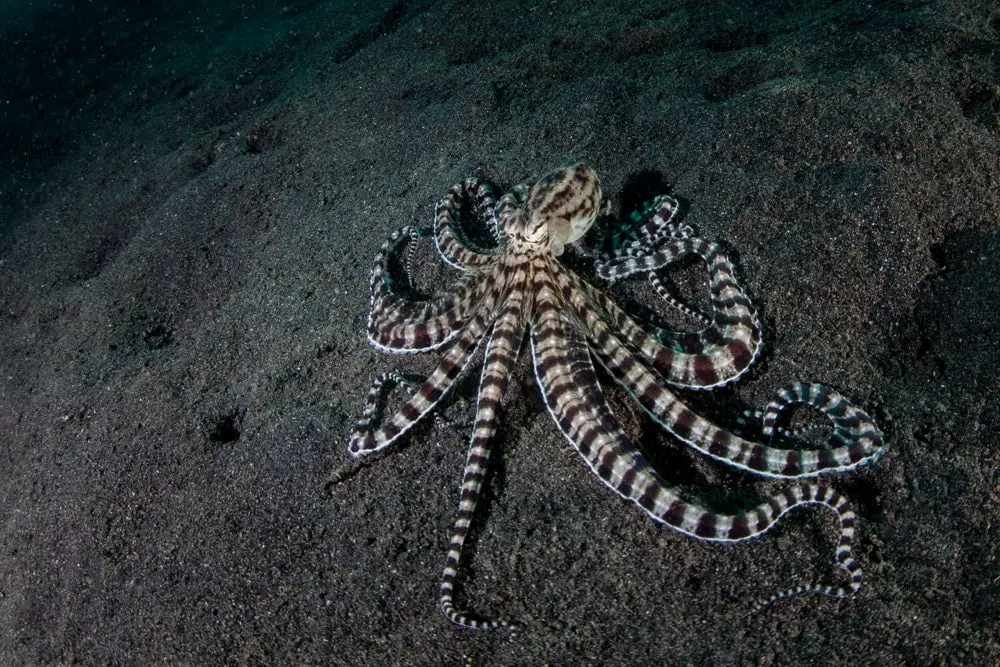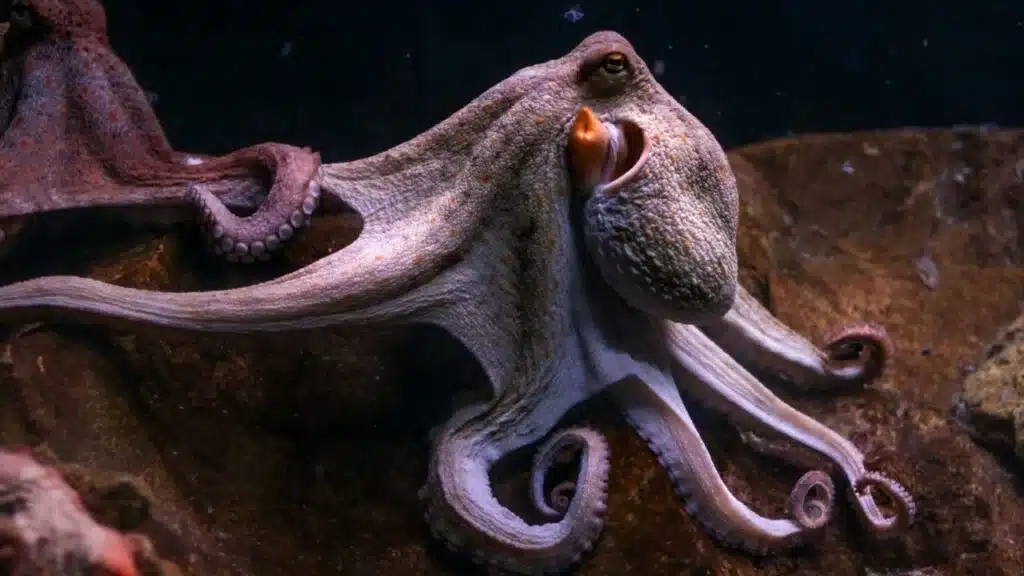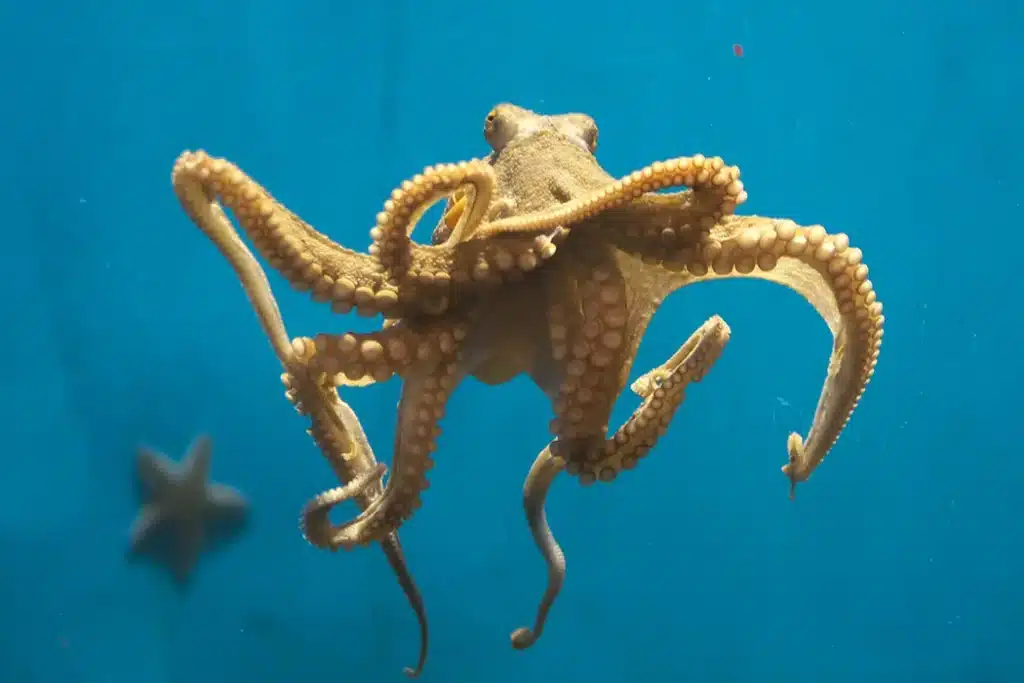How Many Types Of Octopus Are There

Introduction
How Many Types Of Octopus Are There: The octopus, a mysterious and highly intelligent marine creature, has captured the fascination of scientists and ocean enthusiasts alike for centuries. With its incredible ability to change color and texture, its sophisticated problem-solving skills, and its enigmatic lifestyle in the depths of the ocean, the octopus stands as one of the most intriguing denizens of the underwater world.
Octopuses belong to the class Cephalopoda, which also includes squids and cuttlefish. While they share common characteristics such as a soft body, beak-like mouth, and well-developed intelligence, the family of octopuses is remarkably diverse. There were over 300 recognized species of octopus scattered throughout the world’s oceans, from the frigid waters of the Arctic to the tropical reefs of the Pacific.
Each octopus species boasts its own unique adaptations and behaviors, ranging from the elusive mimic octopus, capable of impersonating other marine creatures, to the giant Pacific octopus, known for its size and strength. While some octopuses are masters of camouflage, others are skilled hunters, using their intelligence to outwit their prey.
We will delve into the world of octopuses, discovering the various types that inhabit our oceans, their remarkable abilities, and the ongoing research that continues to unveil their secrets. Join us on a journey to unravel the mysteries of these incredible cephalopods and learn about the many types of octopus that inhabit the depths of our planet’s waters.

What is the rarest octopus?
Dumbo octopuses are naturally rare, and the deep sea is enormous, so these species have specialized behaviors to increase the likelihood that they can successfully reproduce anytime that they find a mate.
One of the rarest octopuses in the world is the Dumbo octopus, scientifically known as Grimpoteuthis. This peculiar cephalopod earned its nickname from the resemblance of its ear-like fins to the animated Disney character, Dumbo the elephant. Dumbo octopuses are deep-sea dwellers, inhabiting the abyssal depths of the ocean, often found at depths of 13,000 feet (4,000 meters) or more. Due to their remote and extreme habitat, encountering these creatures is an exceptionally rare occurrence.
What makes Dumbo octopuses even more unusual is their gelatinous, umbrella-like bodies, which lack the rigid structure seen in many other octopus species. They move through the water with grace, propelled by the undulating motions of their ear-like fins. Their large, expressive eyes, adapted to low-light conditions, help them navigate the pitch-black realms of the deep ocean.
Because Dumbo octopuses live in such challenging environments and are rarely observed by humans, much about their biology, behavior, and distribution remains a mystery. They are a testament to the astonishing diversity of life in the oceans, particularly in the hidden, abyssal regions where few organisms can survive.
What is a type of octopus?
Common Octopus. The vulgaris octopus is common but no less special. As its name suggest, the common octopus is widely distributed in tropical, subtropical, and temperate seas throughout the world. It is a well-known medium sized species of octopus, that lives between the surface and a depth of 500 feet (152 m).
One intriguing type of octopus is the Blue-Ringed Octopus, known for its stunning appearance and potent venom. Despite its small size, typically no larger than a golf ball, this octopus is among the world’s most venomous marine animals.
Blue-Ringed Octopuses are native to the warm waters of the Indo-Pacific, often found in tide pools, coral reefs, and sandy seabeds. What distinguishes them are the iridescent blue rings that appear on their typically beige or yellowish bodies when they feel threatened or agitated. These striking patterns serve as a warning to potential predators, signaling the presence of a dangerous toxin.
The venom of the Blue-Ringed Octopus contains powerful neurotoxins that can quickly paralyze prey and pose a potential threat to humans. While they are not naturally aggressive, their venomous bite can be fatal if left untreated. Therefore, encountering these mesmerizing creatures in their natural habitat requires caution and respect.
Beyond their striking appearance and venomous capabilities, Blue-Ringed Octopuses are known for their intriguing behavior and reproductive strategies. These tiny octopuses are dedicated parents, with females guarding their eggs until they hatch, even foregoing food during this period. Their fascinating characteristics make them a subject of interest for marine biologists and a symbol of the incredible diversity found in the ocean’s depths.
Do octopus have 8 hearts?
Octopuses have three hearts, which is partly a consequence of having blue blood. Their two peripheral hearts pump blood through the gills, where it picks up oxygen. A central heart then circulates the oxygenated blood to the rest of the body to provide energy for organs and muscles.
This common misconception about octopuses having eight hearts likely arises from their name and the fact that they have eight arms. In reality, their circulatory system is quite different from that of humans and many other animals.
Octopuses have two branchial hearts and one systemic heart. The two branchial hearts are responsible for pumping blood through the gills, where oxygen is absorbed from the water. Once oxygenated, the blood is then pumped by the systemic heart to the rest of the octopus’s body. The systemic heart is the larger and more prominent one and plays a central role in circulating oxygenated blood throughout the octopus’s muscles and organs.
This unique circulatory system allows octopuses to efficiently distribute oxygen to their highly active and agile bodies. It’s a remarkable adaptation that helps them thrive in the underwater environments they inhabit.
So, while octopuses do indeed have multiple hearts, they have three, not eight. This fascinating aspect of their anatomy is just one of the many remarkable features that make octopuses such intriguing and mysterious creatures of the sea.
What is the most popular type of octopus?
The common octopus (Octopus vulgaris) is a mollusc belonging to the class Cephalopoda. Octopus vulgaris is one of the most studied of all octopus species, and also one of the most intelligent.
One of the most popular and widely recognized types of octopus is the Common Octopus, scientifically known as Octopus vulgaris. This species of octopus is known for its widespread distribution throughout the world’s oceans and its appearance in various culinary traditions, making it a common subject of interest for both scientists and food enthusiasts.
The Common Octopus is found in temperate and tropical waters across the Atlantic Ocean, Mediterranean Sea, and parts of the Indian and Pacific Oceans. It has a mottled reddish-brown or pinkish-gray appearance with characteristic large, expressive eyes. This octopus is known for its remarkable intelligence, adaptability, and the ability to change color and texture for camouflage and communication.
In culinary circles, the Common Octopus is a prized ingredient in many cuisines worldwide. It’s used in dishes ranging from Mediterranean grilled octopus to Japanese takoyaki and Spanish pulpo a la gallega. Its tender, flavorful meat is a delicacy appreciated for its unique taste and versatility in cooking.
The combination of its ubiquity in the ocean, intriguing behavior, and culinary appeal has made the Common Octopus one of the most well-known and popular types of octopus in both scientific and gastronomic communities. Its unique attributes continue to captivate the curiosity and taste buds of people around the world.
What country is known for octopus?
Japan. Octopus is a common ingredient in Japanese cuisine, including sushi, sashimi, karaage, stew, sour salad, takoyaki and akashiyaki. Takoyaki is a ball-shaped snack made of a wheat flour-based batter and cooked in a special takoyaki pan.
Greece is a country renowned for its association with octopus in the culinary world. Octopus holds a special place in Greek cuisine, and it has become a staple in many traditional dishes. The Mediterranean Sea, which surrounds Greece, is teeming with these fascinating creatures, making them readily available to coastal communities.
One of the most famous Greek dishes featuring octopus is “Octopus Krasato,” a delectable stew where octopus is simmered in a rich tomato and red wine sauce until tender. This dish captures the essence of Greek cuisine, which emphasizes simple, fresh ingredients and robust flavors. Grilled octopus is another popular preparation, where the octopus is first tenderized, then grilled to perfection, resulting in a smoky, charred exterior and a tender, succulent interior. It is often served with olive oil, lemon, and herbs.
In Greece, octopus is not just a culinary delight but also a cultural symbol. Fishing for octopus has deep roots in Greek coastal communities, and the preparation of octopus dishes is often a communal and celebratory affair, bringing families and friends together.
Tourists visiting Greece often make it a point to sample these delightful octopus dishes in seaside tavernas while enjoying stunning views of the Mediterranean. Whether you’re savoring grilled octopus under the sun or enjoying a hearty octopus stew in a cozy tavern, Greece’s love affair with octopus is a testament to the rich tapestry of flavors and traditions that define its gastronomic heritage.
Are all octopus species similar in appearance and behavior?
While octopuses belong to the same class of cephalopods, not all species share identical appearances or behaviors. The octopus family encompasses a diverse array of over 300 species, each exhibiting unique characteristics shaped by their respective environments and evolutionary paths.
In terms of appearance, octopuses range from the common Atlantic octopus with its reddish-brown hue and bulbous head to the strikingly patterned mimic octopus, capable of imitating a variety of marine creatures. Additionally, some species boast specialized features like the finned blanket octopus, known for its vibrant iridescent webs. Such variations in coloration, size, and shape serve as adaptations to their habitats, aiding in camouflage and predator avoidance.
Behaviorally, octopuses display a wide spectrum of traits. While some are solitary and reclusive, like the deep-sea Dumbo octopus, others, such as the gregarious California two-spot octopus, exhibit more social tendencies. The blue-ringed octopus showcases remarkable intelligence, using complex hunting techniques and demonstrating impressive problem-solving skills. Conversely, the elusive giant Pacific octopus is known for its short lifespan, marked by a solitary existence focused on reproduction.
In essence, the diverse nature of octopus species highlights the extraordinary adaptability and evolution within this fascinating group of marine creatures. Their wide-ranging appearances and behaviors underscore the intricate interplay between biology and environment, showcasing the marvels of natural diversity.
Are there any particularly interesting or unique octopus species?
Indeed, the world of octopuses is teeming with intriguing and unique species. Among them, the mimic octopus stands out as a master of disguise, capable of imitating various marine creatures to evade predators or ambush prey. This remarkable ability showcases a level of mimicry unparalleled in the animal kingdom.
The blanket octopus, found in tropical waters, boasts an extraordinary defense mechanism. The female sports long, flowing membranes that billow out like an otherworldly cape, creating a dramatic spectacle designed to deter would-be predators. This adaptation, coupled with their size, makes them an awe-inspiring sight in the depths of the ocean.
The coconut octopus is another captivating species. Exhibiting exceptional problem-solving skills, it often employs empty coconut shells or discarded objects as portable shelters, showcasing a level of tool use rarely seen in invertebrates. This behavior speaks to their high cognitive abilities and adaptability.
Lastly, the deep-sea Dumbo octopus is a marvel of evolution. Resembling the beloved Disney character, its ear-like fins serve as both a means of locomotion and a display of elegance in the depths where it resides.
These extraordinary octopus species exemplify the boundless wonders of marine life, demonstrating the incredible diversity of adaptations and behaviors that have evolved in this enigmatic family of creatures.
How do scientists differentiate between octopus species that look similar?
Distinguishing between visually similar octopus species is a meticulous task that relies on a combination of morphological, genetic, and behavioral analyses. Scientists often examine key physical characteristics such as body shape, arm length, skin texture, and the presence of unique features like papillae or specialized appendages.
Genetic techniques play a crucial role in this process. DNA sequencing allows scientists to scrutinize the genetic makeup of individual octopuses, identifying subtle but significant variations in their genetic codes. This molecular data offers a definitive means of categorizing species and discerning evolutionary relationships.
Behavioral studies also contribute to species identification. Observing behaviors related to feeding, mating, and locomotion can unveil distinct patterns and adaptations specific to particular species. For instance, the mating rituals of certain species may involve intricate displays or courtship behaviors that are unique to their kind.
In some cases, specialized equipment such as underwater cameras and remotely operated vehicles (ROVs) are employed to capture high-resolution imagery and footage, aiding in the documentation of subtle differences in appearance and behavior.
Ultimately, it is the comprehensive integration of these multidisciplinary approaches that enables scientists to accurately differentiate between visually similar octopus species, providing crucial insights into their ecology, evolution, and conservation.

Conclusion
In our exploration of the diverse world of octopuses, we’ve uncovered a multitude of fascinating species that inhabit the Earth’s oceans. Over 300 recognized species of octopus showcased a remarkable array of adaptations, behaviors, and characteristics. These cephalopods have proven to be far more than just enigmatic creatures; they are living testaments to the wonders of evolution and the intricacies of life beneath the waves.
From the masterful camouflage of the mimic octopus to the strength and size of the giant Pacific octopus, each species has carved out its own niche in the aquatic ecosystem. The octopus’s astounding intelligence, problem-solving skills, and ability to communicate through complex body language further underscore their uniqueness among marine life.
However, it’s essential to note that our understanding of the octopus family continues to evolve as scientific research progresses. New species may be discovered, and our comprehension of known species may deepen, offering fresh insights into the world of cephalopods.
Our journey through the diverse realm of octopuses, we are left with a profound appreciation for these incredible creatures and a reminder of the boundless diversity that thrives within our oceans. Their existence serves as a testament to the enduring mysteries of the natural world, waiting to be explored and understood by future generations of scientists and ocean enthusiasts.



